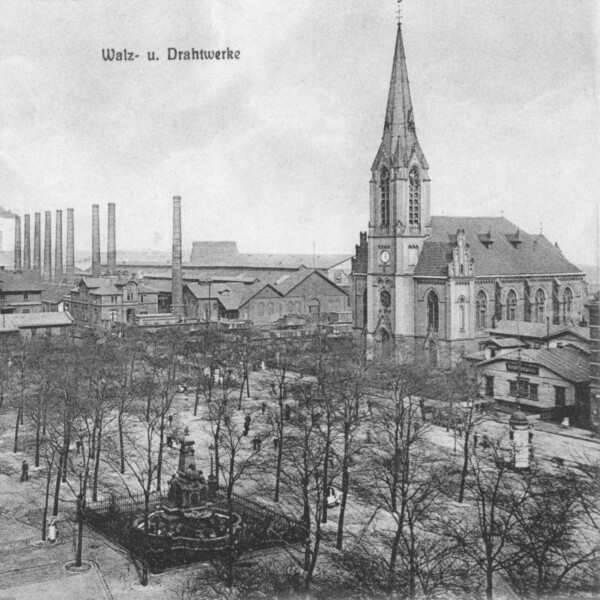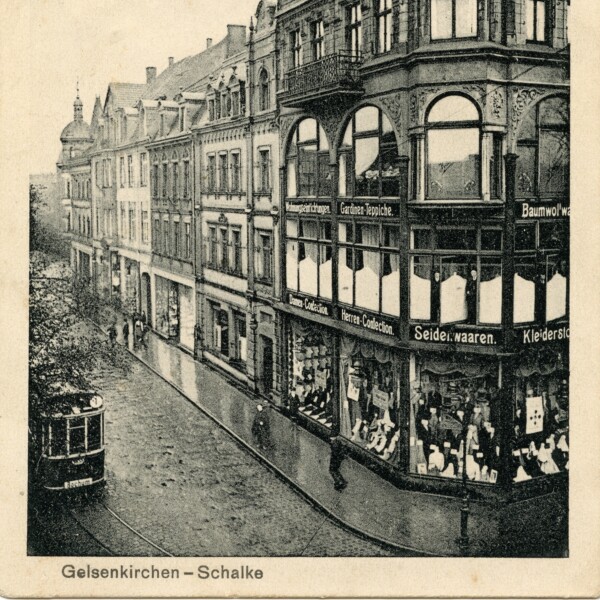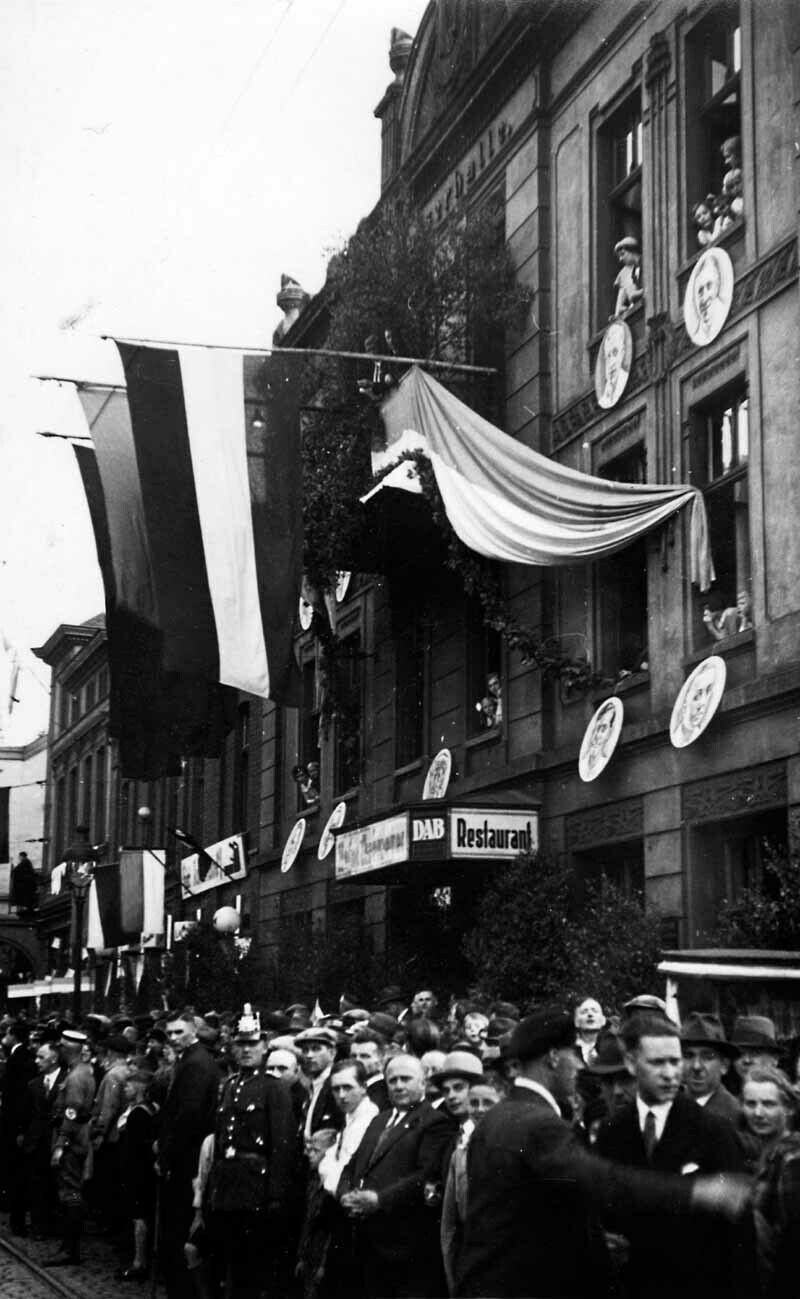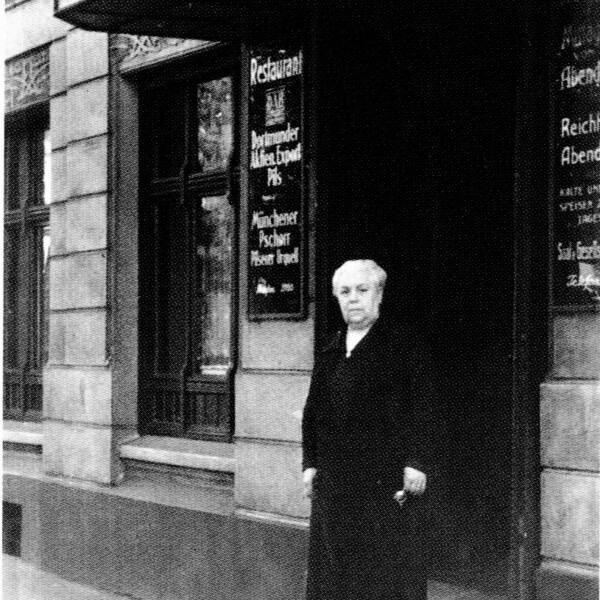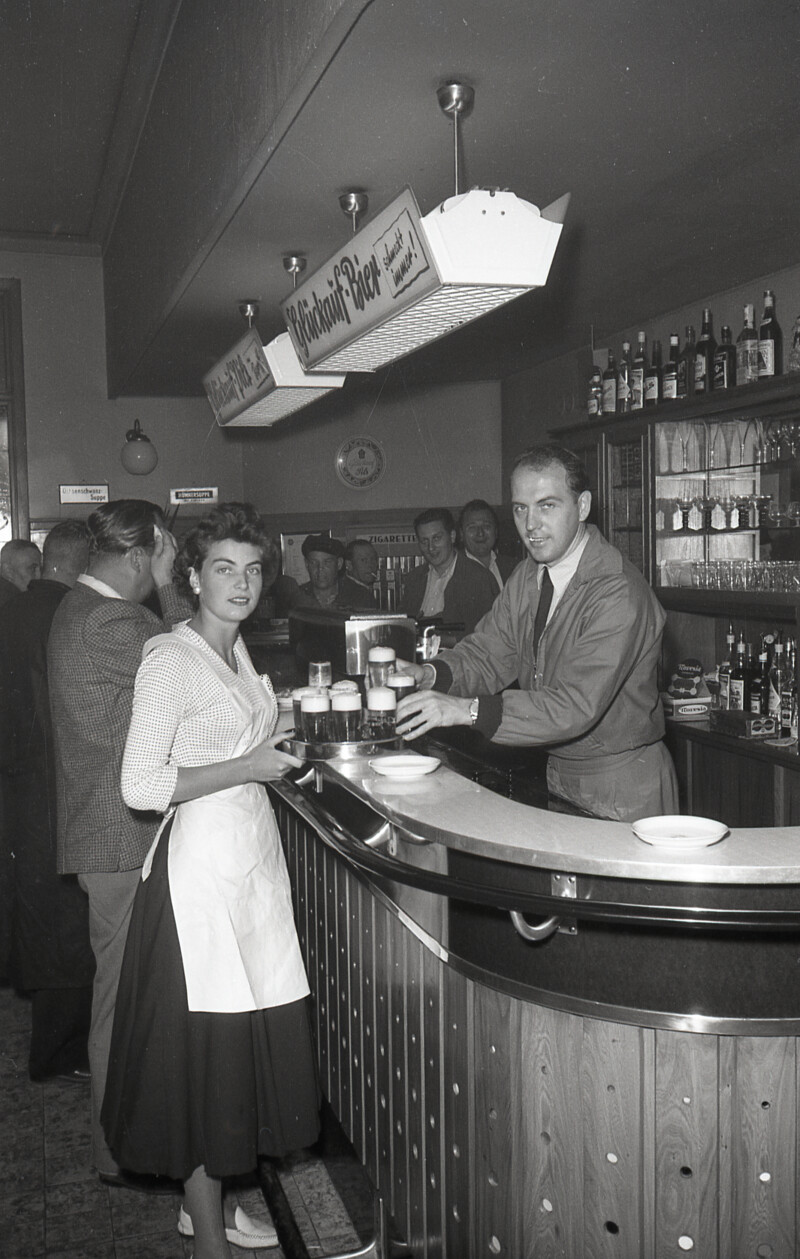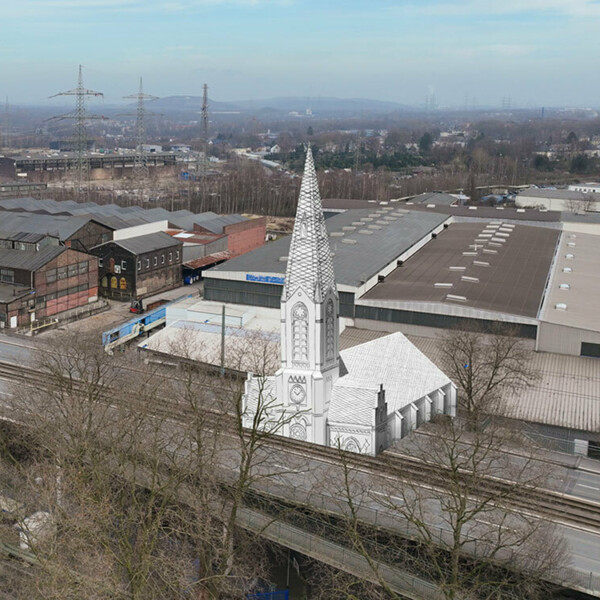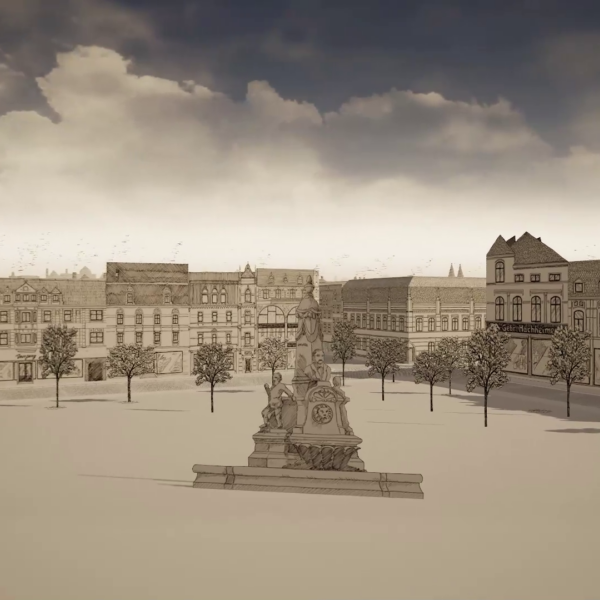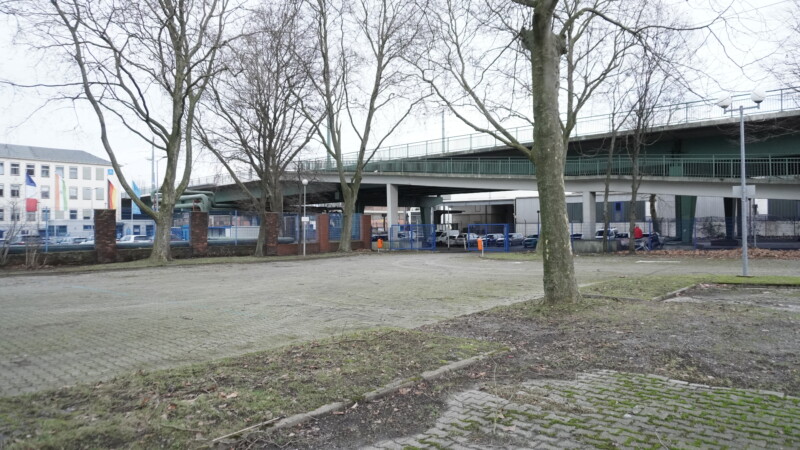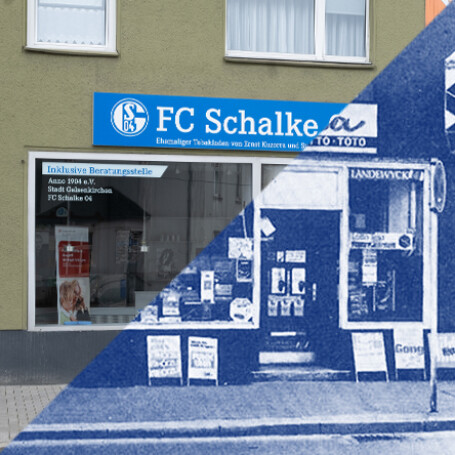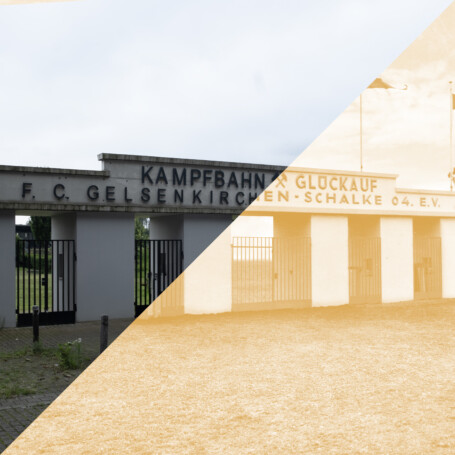Schalke Market


When the myth was more than a song
It's a big day in Schalke. The team around Szepan and Kuzorra returns from Berlin today. For the first time, they bring the trophy for the German champion, the so-called "Viktoria", to the Schalke Market. In a heart-stopping final, they had beaten FC Nuremberg 2 to 1. 30 years after the founding of the club at House Goor, Schalke are the pinnacle of German football. The whole neighbourhood is in ecstasy. Thousands of people stream through Schalker Straße (Schalke Street) and Kaiserstraße (Empereor’s Street) towards Schalke Market. They all want to be there when Kuzorra presents the trophy in the Kaiserhalle. Huge medals with portraits of the players hang from the windows of the hall. At the other end is the Friedenskirche. At the northern end of the square is the Consolidation Colliery with its shafts 1 and 6. And in the centre, the monument to the industrialist Friedrich Grillo stands out from the crowd. Everyone waits in anticipation for the carriages with the players. When they arrive, the people cheer for their heroes. People dance all night in front of the chimneys and smokestacks and in the glow of Schalke's industry. The myth of the Schalke Market is born.
Until 1942, Szepan and Kuzorra will bring the "Viktoria" to the Schalke Market five more times. But even if no championships are celebrated at Schalke Market, it remains the beating heart of the neighbourhood. It was the intersection of living, life and work. The Kaiserhallen were the centre of FC Schalke 04's club life, acting as club pub, office and club museum all in one. The Schalke Market No. 10 was a meeting place for officials, players and fans. As an active player, Ernst Kuzorra ran a tobacco shop right next to the Kaiserhallen for a while, Fritz Szepan a textile shop. After the Second World War, Berni Klodt stood behind the bar of his pub "Schalker Kreisel" directly on Schalke Market from 1952 to 1963. As captain, he brought the German championship to Schalke for the last time in 1958. Just like in the golden age, the blue and white triumphal procession made its way from Gelsenkirchen's main railway station to Schalke.
When Berni Klodt opened his pub, the Schalke Market was unrecognisable from the successful days of Szepan and Kuzorra. Most of the magnificent buildings were bombed during the Second World War. The same was true of the Friedenskirche. The Grillo monument was destroyed, and a replica of the bust of the Schalke’s founder moved to Grillo Square. Today, only a few cars are parked at Schalke Market, off to the side and in the shadow of the Berlin Bridge. Nothing points to the much-sung "myth of the Schalke Market". Yet its cradle is right here.
